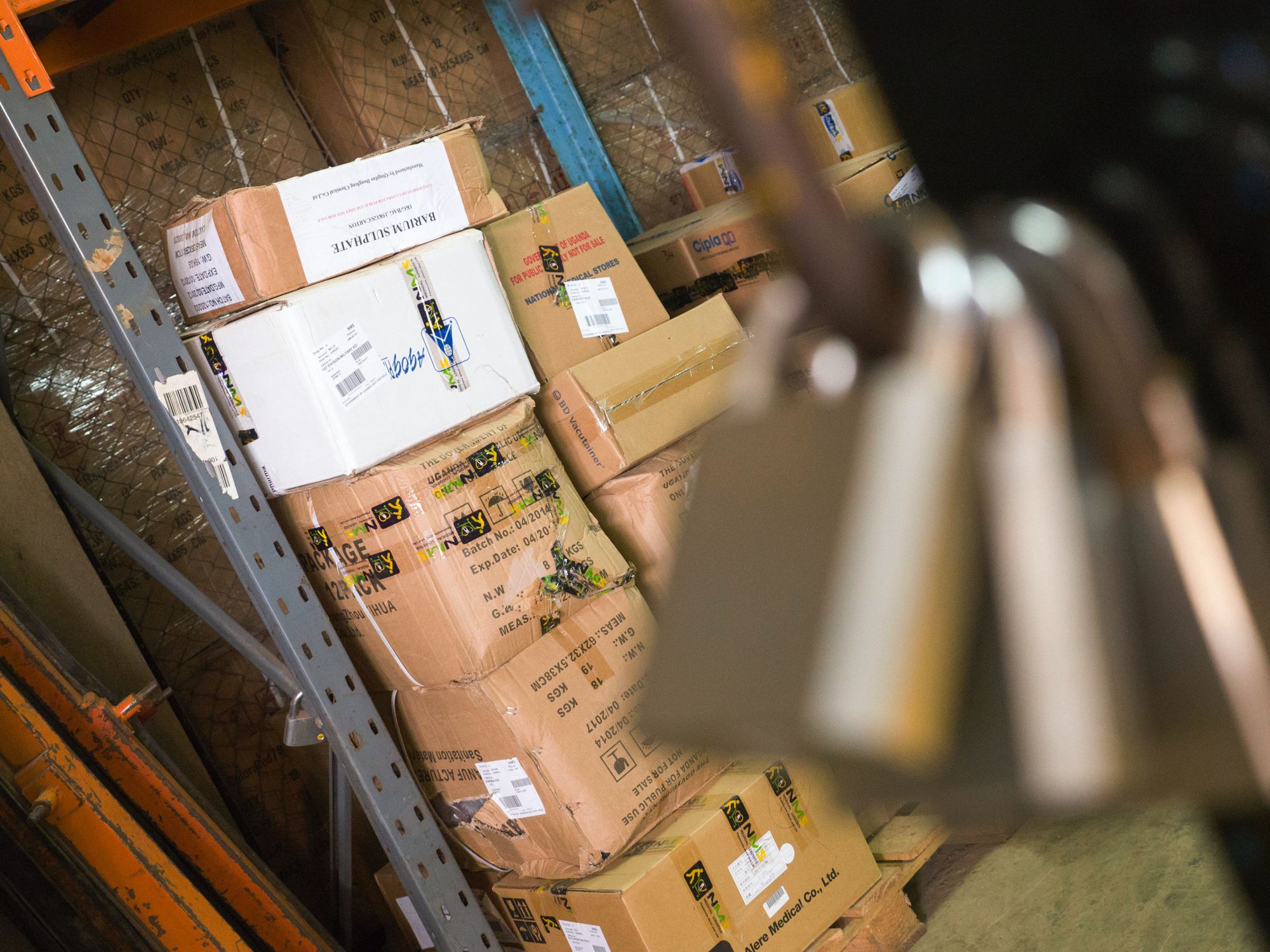What if you could use digital supply chain management (SCM) automation to streamline your business? Wouldn't that be amazing? If you're like most people, you probably think of this as a pipe dream.
There are actually a lot of things that digital automation can do that would transform your business. For one, they can automate processes and tasks. This allows companies to work more efficiently and reduce costs. It also opens up new opportunities for collaboration between different departments.
Manufacturing is one area where automation has had a significant impact on supply chain management. Demand for products changes constantly, which means that manufacturers have to change their production strategies regularly in order to keep up.
Automation has enabled manufacturers to speed up this process by automating much of the paperwork involved in digital SCM. As a result, factories can now produce more products with less manpower and fewer interruptions.
The benefits of digital supply chain automation can work wonders for your business. By automating different processes, companies can improve their relationships with suppliers. In addition to raising product quality, this lowers communication costs and hazards. In short, automation has radically transformed many aspects of business-from manufacturing to SCM digital.
In today's article, we'll study about digital supply chain automation and other concepts associated with it. Let's take a look at the table of content below:
- Supply Chain Management Definition
- Supply Chain Automation Definition
- Purpose of Digital Supply Chain Automation
- Digital Transformation in Supply Chain Management
- Benefits of Digital Transformation in Supply Chain Management
- Five Easy Steps to a Digital Supply Chain
- 7 Top Tech Trends for Digital Supply Chain Transformation
- Frequently Asked Questions (FAQs) Associated with Digital Supply Chain Management (SCM)
- How Deskera Can Assist You?
Supply Chain Management Definition
Supply chain is the management of the flow of goods and services from the source of production to the point of consumption. It includes the coordination of production, logistics, inventory, supply, and demand.
Finding and procuring raw materials and components, producing a product and figuring out demand, establishing sales channels and logistics, and then providing customers with access to their orders are all common steps in a supply chain.
On the other hand, digital supply chain is the use of digital technologies and processes to optimize the flow of goods and services from the source of production to the point of consumption. It enables the automation of all activities within the supply chain. It also allows for the integration of data and information to improve visibility and efficiency throughout the supply chain.
A digital supply chain provides significantly more information on how the system works. Modern digital technology must be incorporated and used throughout the whole supply chain, from inventory management to transportation and distribution. For instance, asset tracking using Bluetooth Low Energy (BLE) may provide real-time position updates, even when moving freight. Implementing BLE app development in this context can significantly enhance the accuracy and efficiency of real-time tracking, ensuring seamless integration within the digital supply chain.
Supply Chain Automation Definition
The process of integrating and automating the whole supply chain, from the first order of raw materials to the delivery of the finished product, is known as supply chain automation.
Automating the supply chain process can involve a variety of activities, from automating the tracking of orders and inventory levels to automating the communication of orders and deliveries.
Purpose of Digital Supply Chain Automation
The purpose of digital supply chain automation is to reduce operational costs, improve operational efficiency, and increase customer service levels by streamlining and automating the entire supply chain process.
This further includes using digital tools to track, monitor, and analyze the entire supply chain from procurement to delivery. it also makes the use of predictive analytics to optimize the supply chain for better performance.
Automation can also create a more efficient and secure process for exchanging data between supply chain partners. Increasing client satisfaction and profitability is the end objective.

Digital supply chain automation involves the use of various technologies, such as:
- Enterprise resource planning (ERP) software,
- Customer relationship management (CRM) software,
- Inventory management systems, and
- Analytics packages.
These tools can be used to track, monitor, and analyze the entire supply chain from procurement to delivery. Additionally, advanced analytics can help to identify trends, predict demand, and optimize the supply chain.
Digital supply chain automation can also create a more secure and efficient process for exchanging data between supply chain partners. This can include the use of secure connections and encryption to protect sensitive data, as well as digital data exchange protocols to ensure data accuracy and integrity.
Ultimately, digital supply chain automation can deliver more precise data that can be applied to decision-making. For instance, analytics can be used to find and fix supply chain inefficiencies as well as to spot possible threats and opportunities. The supply chain can then be optimized for best performance using this data.
Digital Transformation in Supply Chain Management
The process of utilizing digital technologies to enhance current supply chain management operations is known as digital transformation. This includes improving communications, automation, analytics, and data-driven decision making. Furthermore, the use of digital transformation can improve supply chain management, boost productivity, and cut costs for businesses.
Some examples of digital transformation in Supply Chain Management include:
- Automated order processing,
- Real-time tracking,
- Predictive analytics, and
- Smart warehouse management.
Automation of the supply chain can result in better customer service, cost savings, and higher accuracy and efficiency. Additionally, automation can help businesses become more adaptable and receptive to shifts in consumer demand and supply chain circumstances.
Automation can also improve the visibility of the supply chain, allowing businesses to better monitor inventory levels and deliveries. Moreover, it can also lower expenses associated with manual labor, enhance uniformity across processes, and eliminate errors.
Automation can also help businesses gain better insights into their supply chain performance and identify areas for improvement. By automating the supply chain process, businesses can gain greater control over their operations and increase the speed and accuracy of their supply chain operations.
Benefits of Digital Transformation in Supply Chain Management
Following, we've thoroughly discussed about some crucial benefits of digital transformation in supply chain management. Let's learn:
1. Increased Visibility:
Digital transformation in supply chain management helps businesses gain a better understanding of their supply chain performance by providing visibility into the flow of goods and services. This visibility allows companies to make better decisions, improve their production processes, and manage their supply chain more effectively.
2. Streamlined Processes:
By implementing digital systems such as advanced analytics, Artificial Intelligence (AI), and robotics, businesses can streamline their supply chain processes. Cost reductions, increased effectiveness, and a decrease in complexity can all result from this.
3. Processes Automation:
Everything in your supply chain is finished automatically when you employ digital transformation. And with little to no manual help. Data delivery to supervisors must be complete and logical, and it must be correct. It helps to translate physical processes into the predefined digital plan, creating a network that is dependable and incredibly precise.
4. Innovation:
Innovation serves as the foundation for all digital transformation initiatives. It enhances conventional supply chain management strategies and supports the business model. Moreover, make connections with suppliers and clients stronger. Every company aspires for supply chain management that is as straightforward as possible if they want to be seen as competent.

5. Improved Customer Service:
By giving businesses a greater understanding of the needs and preferences of their customers, digital supply chain management can help businesses provide better customer service. For example, predictive analytics can provide companies with the data they need to anticipate customer needs and proactively address them.
6. Business Flexibility:
Digital solutions will allow businesses flexibility at every stage of the process, minimizing any bottlenecks or delays caused by manual labor. As a firm grows, the logistics and transportation scenario become increasingly challenging. The best transit alternatives will be accessible once everything has been digitalized. Then, it will right away increase the effectiveness of transportation and customer service.
7. Better Collaboration:
Embracing digital transformation can improve a company's ability to work with partners, vendors, and consumers. This can lead to better information sharing, faster response times, and improved overall service.
8. Enhancing Decision Making:
Once you have adequate supply chain management systems with the most precise data connected, it will be easy to make better and quicker judgements. Additionally, performance can be swiftly and accurately evaluated by combining transactional data with readily available data. As a result, it helps avoid the distortions that average costing causes.
9. Increased Security:
With digitalization of supply chain management and logistics transformation, companies can use advanced security measures. It includes encryption, authentication, and tokenization to ensure the safety of their data. This can help protect their supply chain from potential cyber threats and ensure that their data is kept secure.
10. End-to-end Customer Contact:
The effects of digital transformation will result in greater customer engagement. For example, a customer who places an order will be updated on its progress. When buying from that brand, customers will then have the proper control, transparency, and experience.
11. Operational Transparency and Visibility:
It is impossible to track the status of an organization's inventory in traditional supply chains because of their inconsistent lead times and lack of transparency. Even the typical consumer is now used to being able to follow their online goods as they move from the warehouse to their front door thanks to developments in digital technology.
Why then shouldn't businesses plan for the same visibility early on in the supply chain?
Over the past few decades, a lack of openness has been a result of poor connectivity. To increase efficiency, more systems and apps were introduced, but doing so created silos and gaps between systems, making it challenging to transfer information between them and track the status of a project.
In order to enable total process visibility and orchestration, a low-code automation platform may connect all systems and establish a central area where your staff may access information. Through the provision of real-time data, employees are given the most recent status updates and are given the ability to act with confidence when doing tasks that depend on important information.
Customers can easily learn how their order is moving through the supply chain, which is advantageous for both customers and employees. Traceability is now essential to customer satisfaction, and a low-code automation platform can provide the necessary visibility.
12. Ensures that the Law is always Upheld:
Reducing risk and maintaining compliance standards are extremely difficult in a post-COVID industry scenario. Even more so for manufacturers and suppliers who have global operations that must abide by a variety of standards, including ethical corporate conduct and laws controlling health and safety. Then, auditing is necessary to demonstrate that these requirements have been fulfilled.
Risk management and supply chain management as a whole can be improved by establishing business operations that are then partially or totally carried out by automation technology. All stakeholders may confirm that best practices are implemented while embracing compliance for effective and risk-averse operations.
Documenting and automating activities is the greatest way to ensure that specific needs are satisfied and that operations are adaptable enough to change. Furthermore, the use of data analytics to identify trends and risks can also help organizations to better manage supply chain risks.
Risk analysis and monitoring tools can be used to detect and identify risks in the supply chain, as well as to monitor processes and products. This will enable organizations to identify potential risks and develop strategies to mitigate those risks.
Additionally, organizations should focus on developing the right partnerships with suppliers and vendors, as well as focusing on creating a culture of trust and respect. This will enable organizations to foster relationships that are based on mutual understanding, trust, and respect, which will ultimately result in better communication and collaboration.
Finally, organizations should develop and implement risk management strategies that are designed to reduce the potential for supply chain disruption. These strategies should include measures such as implementing backup plans, alternate sourcing and delivery networks, and monitoring of supplier performance. By implementing these strategies, organizations can ensure that their supply chain operations are as secure and efficient as possible.
Five Easy Steps to a Digital Supply Chain
Even if the transition from a conventional to a digital supply chain is challenging, it is necessary if you want to fully benefit from digital transformation. You may prepare for the digital transformation of your supply chains by taking the steps listed here.
1. Build a Clear Vision:
The first step in implementing supply chain digital transformation is to develop a clear vision for the change. A company needs to establish a plan for how it will use digital technology to improve the supply chain.
To accomplish the intended results, this strategy should include objectives, strategies, and tactics. Additionally, the plan should also include timelines, budgeting, and implementation plans. The resources and individuals needed to carry out the strategy effectively must be identified.
Once the plan is in place, the company should begin implementing the digital transformation in the supply chain. This may involve automating certain processes, using analytics to gain insights, leveraging cloud-based tools, or implementing artificial intelligence in certain areas.
Additionally, the company should also consider investing in the training and development of its personnel to ensure they are able to effectively use the new technologies.
Finally, the company should be prepared to monitor the progress of the transformation and adjust the plan as necessary. This may involve tracking key performance indicators (KPIs) to measure the success of the transformation, developing feedback loops to ensure that the changes are actually improving the supply chain, and making adjustments to the plan as needed.
By monitoring the progress of the transformation, the company can ensure that it is on track to achieve its desired outcomes.
- Look over the tools at hand and the systems in place: Find the skills you'll need to fill the gaps and achieve your transformational goals. Look for:
- Dated systems: Verify that your present systems' technology can support your new goals. Do your business's objectives and the technologies you employ align? Determine which digital solutions can help your business get the results you want.
- Analyze the production, collection, and evaluation of data that is currently being produced by current systems. Check whether the data is available to gain insightful information.
- Check to discover if your staff has the abilities required to work with and adapt to the new business model.
2. Use a Unified Platform:
Utilize a unified platform to connect data and processes for complete, end-to-end supply chain visibility. Significant processes including transportation, demand forecasting, inventory control, and warehouse management should be streamlined using greater openness. The fundamental goal is to raise awareness of each activity and process throughout the entire supply chain.
3. Automation Planning Process:
Automate planning to make it simpler to finish projects and make sense of enormous amounts of data. Automated processes should take the role of routine or repetitive tasks. Procedures that demand coordination between planners or entail challenging circumstances shouldn't be automated.
4. Employ Data and Analytics:
Supply chain leaders need to have access to up-to-date data in order to make informed decisions. Furthermore, it enables them to work efficiently with suppliers, partners, and other connected positions. Real-time data also enhances supply chain visibility and assists in the early detection of potential issues.
Additionally, planning procedures can be enhanced and insightful data can be produced by using AI-powered analytical tools. As an example, you can use analytics to avoid an issue with running out of supply and adjust your inventory as needed.
5. Integrate People and Processes:
Since switching to a digital supply chain software would be useless if your team members did not support the new approaches, it is crucial to align people with procedures.
In this shift, technology should be linked with processes, people, and management. Without such integration, teams might not be able to achieve the right results under the new business model.
7 Top Tech Trends for Digital Supply Chain Transformation
Following, we will learn about a variety of supply chain technologies. And how each technology improves your business's overall effectiveness. Therefore, let's begin:

1. Automation:
Automation is becoming increasingly important in the digital transformation of supply chains. Automation helps streamline processes, reduce costs, and improve efficiency. Artificial intelligence (AI) and robotic process automation (RPA) are being utilized to automate manual operations and lessen the demand for manual labor.
2. Cloud Computing:
Companies may now store and access data from anywhere thanks to cloud computing. This enables businesses to rapidly and easily access the data they require without having to set up and manage on-premises IT infrastructure. Cloud-based technologies are also allowing companies to reduce their IT costs and enable real-time collaboration across the supply chain.
Artificial intelligence (AI) in the supply chain refers to a set of technology tools that companies can utilize to automate repetitive tasks, enhance employee performance, and better analyze complex information.
Supply chain leaders are currently addressing enduring data silos and governance concerns with AI and analytics. Due to its features, networks of stakeholders that were previously distant or dissimilar can now be more successfully integrated and visible.
3. Big Data:
Big data is a key component of supply chain digital transformation. Big data enables businesses to quickly and accurately process massive amounts of data, giving them insights into customer behavior and empowering them to make wise decisions. Companies can use big data analytics to optimize inventory control, demand forecasting, and supply chain planning.
4. Blockchain:
Blockchain is a type of digital ledger that securely and irrevocably saves data. Blockchain technology can be used to improve supply chain transparency and traceability, reduce errors and fraud, and enable data sharing and real-time collaboration.
5. Integration of eCommerce:
B2B merchants can identify and rectify any inefficiencies in their supply chain models due to contemporary supply chain management technology.
Thanks to interconnected systems, they can deliver seamless client experiences and run efficient operations. Due to the free flow of information across departments, businesses are starting to benefit from connected supply chains for their eCommerce operations.
6. Internet of Things (IoT):
The Internet of Things is a system of physically connected devices to the internet (IoT). The supply chain is already significantly impacted by the Internet of Things, but with more and more applications, it is anticipated to become much more significant.
Up to 50% of organizations may use new cutting-edge technologies to help supply chain operations in the upcoming years.
IoT in supply chains and manufacturing can also be utilized to enhance fleet management, inventory control, warehouse management, and even technical and mechanical maintenance. It may even be used to build fully intelligent fleets and warehouses, increasing productivity.
7. Digital Twins in the Supply Chain:
IoT (IoT) The supply chain, which includes numerous warehouses, assets, and logistical positions, is represented by a computerized model. The supply chain's performance is simulated by the digital twin while accounting for all the complexity that introduces risks and weak points.
A digital twin also enhances visibility and empowers your employees to exploit opportunities, particularly in complex supply chains.
Frequently Asked Questions (FAQs) Associated with Digital Supply Chain Management (SCM)
Following. we've discussed some crucial frequently asked questions (FAQs) associated with digital supply chain management. Let's learn:
Que 1: What does Supply Chain Digitalization Entail?
Ans: Supply chain digitization is the process of digitalizing current operations and data. Contrast that with supply chain digitalization or digital transformation, which emphasize how businesses use this data to significantly alter and improve their supply chains, respectively.
Que 2: Why are Digital Supply Chains a Necessity?
Ans: Digital supply chains are a necessity because they enable organizations to become more efficient, cost-effective, and agile. Digital supply chains are the backbone of the digital economy, they enable organizations to leverage technology to better manage their supply chain operations and enable them to better serve their customers.
Digital supply chains provide organizations with real-time visibility into the supply chain, allowing them to better identify and address issues that could be impacting supply chain operations. This visibility also enables organizations to better forecast demand and create more efficient production plans to better meet customer expectations.
In addition, digital supply chains make it possible for businesses to automate many of their supply chain operations, which frees up time and money by doing away with manual tasks and the need for additional workers.
Automation also enables organizations to respond quickly to changing customer demands or unplanned disruptions in the supply chain.
Finally, digital supply chains enable organizations to collaborate more effectively with their suppliers and partners by providing transparency into the supply chain and allowing them to share data in real-time. This collaboration enables organizations to create more efficient, cost-effective, and agile supply chains that are better able to meet customer needs.
Check the number of factors that are making digital supply chains a necessity:
1. Increasing customer demand for faster delivery.
2. The rise of e-commerce and online shopping.
3. The need for greater supply chain visibility and traceability.
4. The shift towards global sourcing and production.
5. Growing competition in the market.
6. Rising customer expectations for higher quality products and services.
7. The global supply chain's growing complexity.
8. The emergence of new technology such as AI and blockchain.
9. The demand for cost- and efficiency-cutting measures.
10. The need for more sustainability and openness.
Que 3: Digital Supply Chain 4.0 in Detail?
Ans: The most recent development in digital supply chain management is known as DSC 4.0. It is an upgraded version of digital supply chain 3.0, which focuses on the optimization of goods and services throughout the supply chain.
This new version of the digital supply chain focuses on leveraging the power of real-time analytics and artificial intelligence (AI) to offer unprecedented visibility, control and optimization of a company's supply chain.
Digital Supply Chain 4.0 is designed to improve the efficiency, accuracy and cost-effectiveness of the supply chain. It enables businesses to keep track of, foresee, and instantly react to the shifting needs of their clients.
Businesses may anticipate client demand, improve supply chain procedures, and automate operations with predictive analytics. With AI-powered technologies, companies can also reduce supply chain disruptions and provide more accurate delivery estimates to customers.
Digital Supply Chain 4.0 also offers improved collaboration between supply chain partners, providing new opportunities to streamline operations. Companies may optimize their supply chain operations and cut costs by cooperating and leveraging shared data.
Final Thoughts
Due to the quickly changing technological environment and increased client expectations, organizations are reevaluating how they conduct business. The supply chain can benefit from the integration of digital technologies by becoming more productive, adaptable, and resilient.
As they review their supply networks, this is the ideal time for businesses to begin putting their plans into action. Digital supply chain transformation is now one of the best and safest ways to build a resilient business.
If you are having trouble with your digital transformation journey, you may engage with a trustworthy company like Deskera to handle your adoption and migration needs.
In order to make it as simple as possible for you to adjust to changes, we are a renowned organization that offers digital transformation solutions. We have helped organizations throughout the world that are experiencing a digital transformation, making your transformation journey simpler. Don't wait anymore. Contact us today!
How Deskera Can Assist You?
Deskera ERP is a comprehensive system that allows you to maintain inventory, manage suppliers, and track supply chain activity in real-time, as well as streamline a variety of other corporate operations.

Deskera ERP and MRP system can help you:
- Manage production plans
- Maintain Bill of Materials
- Generate detailed reports
- Create a custom dashboard
Deskera Books enables you to manage your accounts and finances more effectively. Maintain sound accounting practices by automating accounting operations such as billing, invoicing, and payment processing.
Deskera CRM is a strong solution that manages your sales and assists you in closing agreements quickly. It not only allows you to do critical duties such as lead generation via email, but it also provides you with a comprehensive view of your sales funnel.
Deskera People is a simple tool for taking control of your human resource management functions. The technology not only speeds up payroll processing but also allows you to manage all other activities such as overtime, benefits, bonuses, training programs, and much more. This is your chance to grow your business, increase earnings, and improve the efficiency of the entire production process.
Final Takeaways
We've arrived at the last section of this guide. Let's have a look at some of the most important points to remember:
- The process of integrating and automating the whole supply chain, from the first order of raw materials to the delivery of the finished product, is known as supply chain automation.
- The process of utilising digital technologies to enhance current supply chain management operations is known as digital transformation. This includes improving communications, automation, analytics, and data-driven decision making.
- The goal of digital supply chain automation is to reduce operational costs, improve operational efficiency, and increase customer service levels by streamlining and automating the entire supply chain process.
- Digital transformation in supply chain management helps businesses gain a better understanding of their supply chain performance by providing visibility into the flow of goods and services.
- Once you have adequate supply chain management systems with the most precise data connected, it will be easy to make better and quicker judgements. Additionally, performance can be swiftly and accurately evaluated by combining transactional data with readily available data. As a result, it helps avoid the distortions that average costing causes.
- Digital supply chain automation strategy is a comprehensive plan for leveraging the power of digital technologies to streamline the supply chain process and maximize efficiency. The goal is to create a more agile, responsive, and cost-effective supply chain.
- The Internet of Things is a system of physically connected devices to the internet (IoT). The supply chain is already significantly impacted by the Internet of Things, but with more and more applications, it is anticipated to become much more significant.
Related Articles












